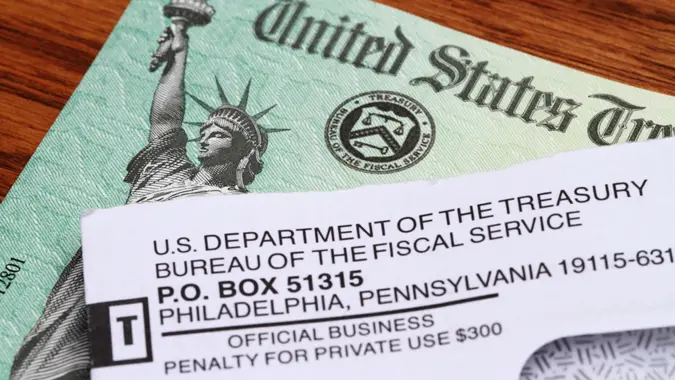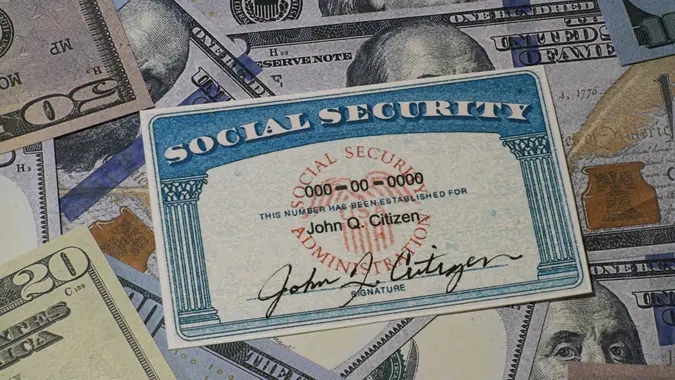What Might Social Security Look Like in 2050?

Commitment to Our Readers
GOBankingRates' editorial team is committed to bringing you unbiased reviews and information. We use data-driven methodologies to evaluate financial products and services - our reviews and ratings are not influenced by advertisers. You can read more about our editorial guidelines and our products and services review methodology.

20 Years
Helping You Live Richer

Reviewed
by Experts

Trusted by
Millions of Readers
Social Security is the most expensive program in America’s budget. According to the Peter G. Peterson Foundation, it accounts for one-fifth of federal spending.
With daunting words like “privatization” and “insolvency” now part of the national debate on this perennially hot-button issue, millions of retirees, future retirees, disabled people, spouses, survivors and employees are paying into a system that they fear might not be there for them when it’s their time to collect.
This article uses current statistics, historical data and future projections to imagine what America’s most important social program might look like 25 years from now, in 2050.
COLAs Alone Could Boost Benefits by Nearly 90%
According to the Social Security Administration (SSA), the average annual cost-of-living adjustment (COLA) — required by law to ensure benefits keep pace with inflation — has been 2.6% over the last decade.
Presuming that remains unchanged for the next 25 years, annual COLAs will have boosted monthly benefit payments by nearly 89% by 2050.
The Average Monthly Check Could Grow by More Than $1,750
According to the SSA, the average monthly Social Security retirement benefit is $1,976 in 2025. With COLAs projected to increase by roughly 89% between now and 2050, based on the current average annual adjustment, the average monthly check would grow to $3,734.64 in 25 years, for a combined increase of $1,758.64 per month.
Without Action, Checks Will Be Smaller, Not Bigger
The SSA’s own data show that the trusts that partially fund Social Security are on pace to be depleted by 2033, leaving only incoming payroll taxes to pay benefits. The SSA writes that starting then, the agency will be able to pay only 77% of promised benefits.
Only congressional action could prevent this pending depletion and shortfall — and the country has been here before. In 1983, lawmakers reformed the system and prevented a similar calamity just months before it would have arrived. However, according to Brookings, the currently pending crisis is at least double that which President Ronald Reagan faced during his first term.
Those Who Most Need Benefits Will Claim Earlier, Get Less
The potential congressional reforms to prevent insolvency in 2033 might include reducing benefits, raising payroll taxes, extending the full retirement age or some combination of the three. The precise remedy is impossible to guess, but the SSA’s 2024 Research, Statistics and Policy Analysis report predicts a bleak outcome for lower-income households in 2050, no matter what action lawmakers take to keep the program afloat.
- Out of necessity, lower-earning households will be much more likely to start taking benefits at 62, the earliest age of eligibility.
- Recipients who claim benefits at 62 will have higher poverty rates than those who claim at 63 or older.
- Not only will those who claim at 62 be disproportionately low-income, but they’ll have lower median benefits than those who can afford to wait.
 Written by
Written by  Edited by
Edited by 

























